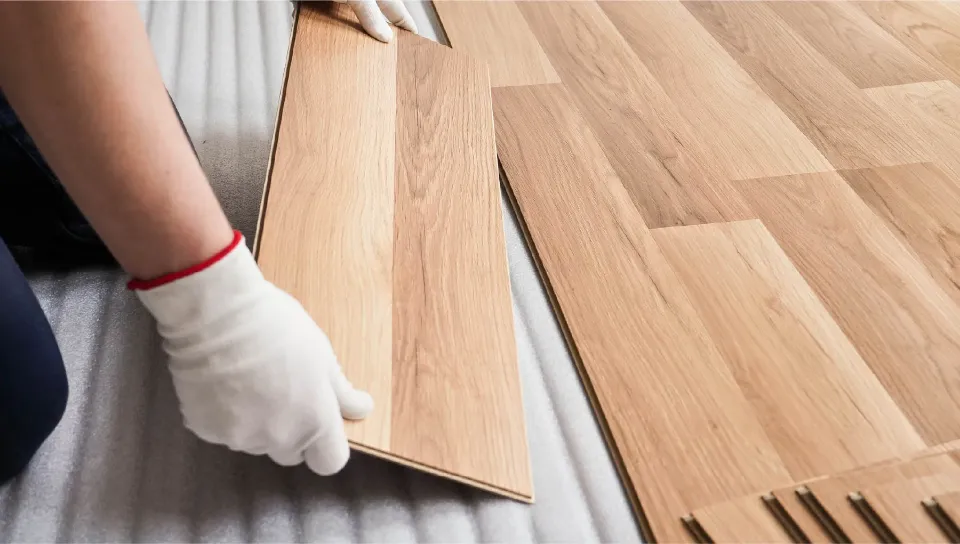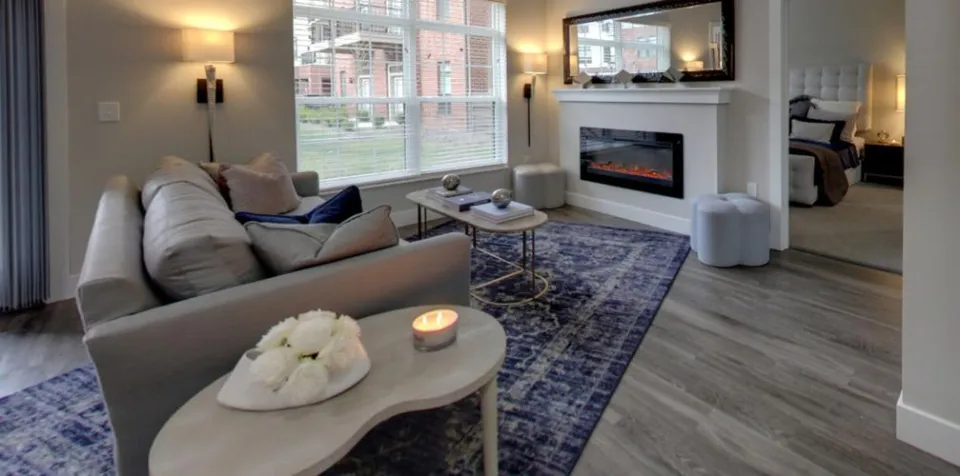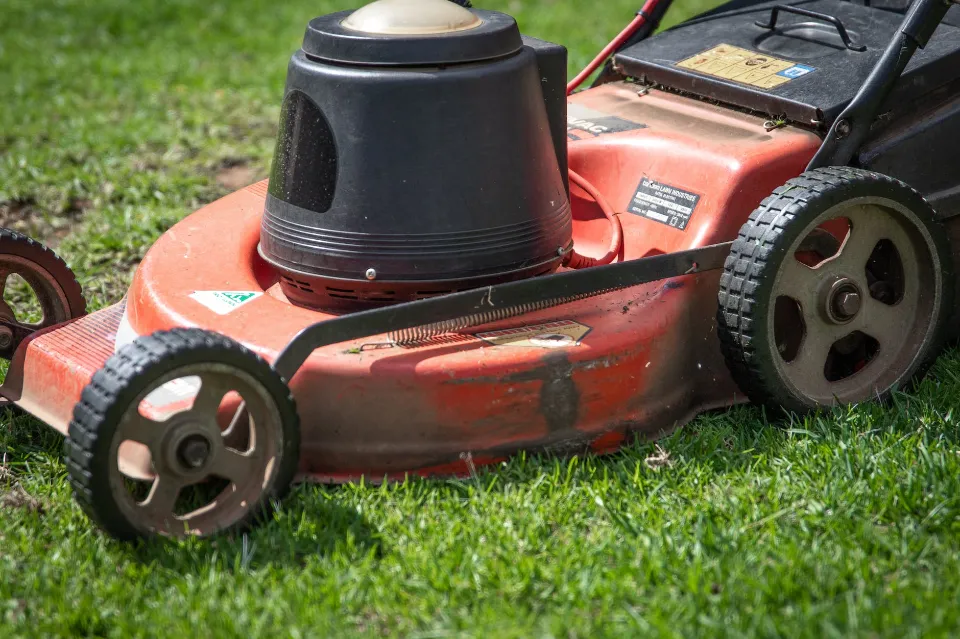Both laminate and vinyl flooring are adaptable, affordable, and durable floor. They do, however, differ greatly as well. Find the best option for your upcoming flooring project.
For glue-down vinyl flooring, the price can be as low as $1.00 or even $.50 per square foot, and for LVT planks, it can range from $3.00 to $5.00.
Despite the many similarities between vinyl and laminate flooring, there are some significant differences. It’s best to think about your home’s needs as well as the requirements of the room you are remodeling when choosing which to install in your house. Your choice may be made or lost based on factors such as comfort while standing or waterproofness.
Learn about the differences between vinyl flooring and laminate flooring, as well as the pros and cons of each. (Read More: 10 Best Mop For Laminate Floors – Best Ways to Clean)
Pros & Cons of Vinyl Vs. Laminate
While a quick glance will reveal that these hard surface products are somewhat comparable, there are subtle differences between each that will influence which style you choose to bring home. Let’s take a deeper dive into the major difference points for each type regarding key factors:
Recommended Rooms
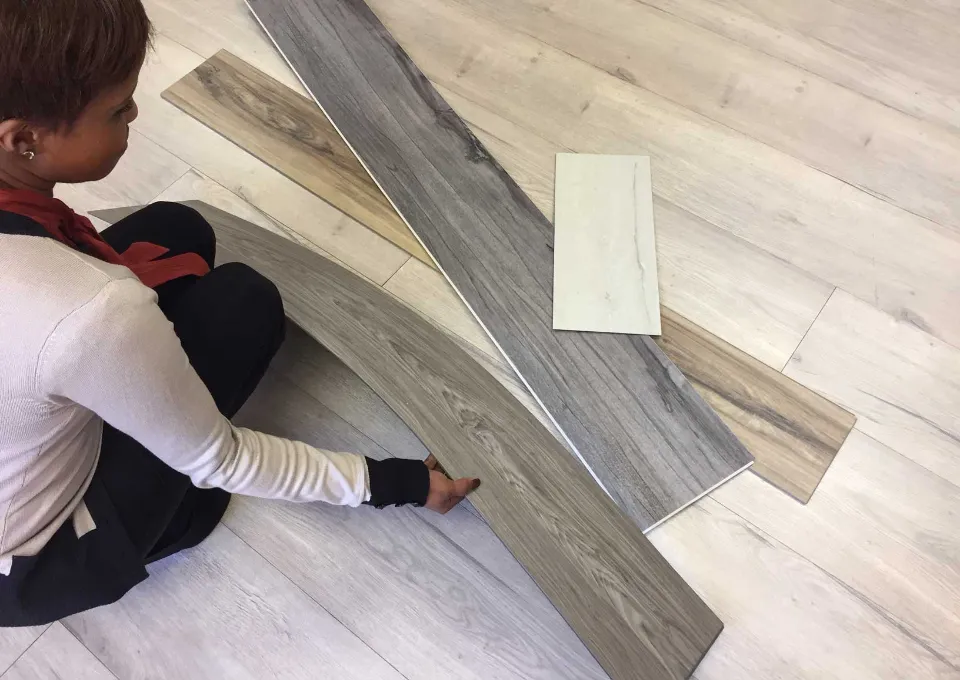
In rooms not well suited for real wood, laminate and vinyl both offer the durability and look of wood flooring. Both options are excellent choices for active homes with pets because they are resistant to scratches, water, and stains when promptly cleaned up, in addition to handling high foot traffic well. These qualities allow for the use of vinyl and laminate in dining rooms, living rooms, bedrooms, and offices. It should be reiterated, though, that vinyl is completely waterproof, whereas some laminate products are water-resistant. In the rooms where moisture protection is needed the most such as kitchens, bathrooms, basements, and mudrooms, waterproof vinyl selections such as Invincible™ H2O™ Luxury Vinyl, the Invincible™ LVT collection, and Invincible XT™ Luxury Vinyl Solidcore will lock out the liquid and be the best fit. Some laminate products are suitable for these areas, but they need to have testing guarantees and product warranties that back up their water-resistant claims. Laminate flooring should not be used in any space where there is a chance of standing water! If spills do happen, they must be cleaned up quickly. Appropriate laminate products are suitable in these areas.
Ease of Installation
In comparison to wood flooring, laminate and vinyl flooring will both be much easier to install. The planks of laminate flooring typically “click” together without the need for nails to be driven into the subfloor, making for a quick installation. In fact, laminate can be installed yourself over almost any other flooring material and is easy to repair if needed. In addition to being an excellent choice for high moisture, high traffic, and below-grade areas, LVT is simple to install in any room of your house. LVT is a great option if this is your first time trying to install a floor yourself. LVT installation won’t move rooms in your home like installing a wood floor won’t because floating floor installations have simple-to-use locking systems. Use longer, wider LVT planks to finish the installation and give the impression of a luxurious real hardwood floor. In order to avoid invalidating your warranty with any DIY installations, be sure to carefully follow the instructions. For installation guidance, look online for videos produced by manufacturers and merchants.
Ease of Maintenance
Laminate and LVT provide homeowners with simple, efficient clean-up in less time than it takes to maintain a spotless wood floor. To avoid the buildup of dirt and grit that could potentially scratch laminate floors, sweep, dust, mop, or vacuum your floor each day on the hard surface setting. It’s crucial to quickly clean up spills because standing water can cause laminate flooring to swell and warp. You will not be able to wet mop your laminate floors because they are not entirely waterproof. The luxury of wet mopping is available with waterproof LVT floors. In addition to providing a rigid texture for durability, your LVT surface can handle mopping with warm water. For simple preventative maintenance, sweep or vacuum your LVT floor as frequently as possible. Occasionally when needed, treat your floor with a cleaner made especially for laminate care or vinyl care. If your laminate or vinyl flooring is damaged, it may be simpler and quicker to repair them than almost any other type of flooring.
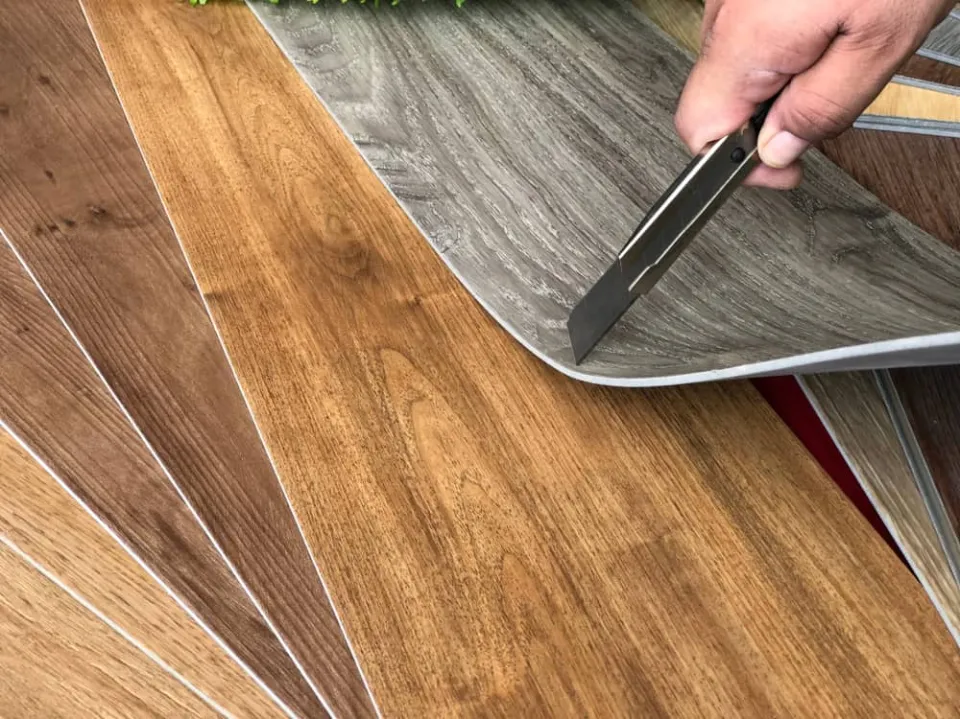
Cost & Long-Term Value
The cost will frequently be the deciding factor, as it is with many decisions that homeowners must make. Laminate and vinyl are both affordable options for hard surfaces because solid hardwood is more expensive. In general, glue-down vinyl flooring can be purchased for as little as $1.00 or even $.50 per square foot, while LVT planks can be purchased for between $3.00 and $5.00 per square foot. Similarly, laminate ranges from $1.00 per square foot for thin planks and around $3.00 to $5.00 per square foot for lower-end 12 mm-thick planks. Although more expensive, premium thick laminate products with valuable certifications will allay the worries associated with low-cost laminates from foreign producers who are exempt from more stringent US regulations. Vinyl and laminate floors won’t increase the resale value of your house as much as solid hardwood, engineered hardwood, ceramic tile, or floors made of natural stone. However, if you need new flooring to make your home presentable before you sell, laminate and LVT will be excellent, quick options to spruce up the property.
What is Vinyl Flooring?
Not to be confused with the vinyl flooring options that first appeared on the market decades ago, today’s vinyl flooring has undergone revolutionary changes, and the market has grown to reflect this. Vinyl belongs to the “resilient” flooring category and lives up to its name by being tough and resilient. Vinyl flooring options are cozy underfoot and remarkably resistant to dents and cracks thanks to their elasticity, which can handle foot traffic and better cushion dropped items. In particular, Luxury Vinyl Tile has achieved the functionality and aesthetics of both stone and hardwood at a lower cost while still offering the advantages of resilient flooring.
The key to vinyl’s surge in popularity is a winning combination of durability, style, affordability, ease of installation and maintenance, and ultimately, overall versatility. With a variety of formats that make DIY installation easier, builders and designers are using vinyl plank, tile, and sheet to complete projects quicker in both residential and commercial applications. Vinyl is also used to replicate the appearance of natural stone with an impressive texture, depth, and realism in addition to hardwood. Another advantage of using vinyl products in design? They are naturally waterproof! Vinyl has consistently ranked among the best flooring materials for handling liquid spills, even as other flooring types have improved in moisture resistance and protection. There is a good chance that you will find a fashionable vinyl option to meet your home’s needs now that some contemporary vinyl options have enhanced rigid top layers for greater durability and are appropriate for high-traffic areas.
Luxury Vinyl
In the market and in homes all over the world, Luxury Vinyl Tile, or LVT, is without a doubt here to stay. Homeowners are praising LVT for its capability to accurately mimic hardwood and stone in the newest, hottest trends. This is a far cry from the vinyl and linoleum options that some still think of when the word vinyl is mentioned. In addition to perfectly replicating the appearance of petrified and reclaimed wood, LVT can also deliver the upscale look of marble and travertine. LVT planks are much less expensive, warmer and softer underfoot, easier and quicker to install, and versatile enough to handle high moisture and high traffic with ease. It’s safe to say that LVT has a lot going for it!
Vinyl Plank
Vinyl planks are much more stain resistant and easier to maintain than conventional hardwood planks, and they are made to give your floors the appearance of hardwood floors without the price. Even though vinyl plank is designed to be a less expensive alternative to genuine hardwood, this format has evolved over time to more closely mimic various wood species, colors, and textures. Unlike vinyl planks, which are waterproof and can each be sealed to help stop moisture from seeping through the floor, natural wood is not a flooring type that is resistant to moisture.
What is Laminate Flooring?
Laminate flooring, which is widely regarded as a less expensive and simpler to maintain alternative to wood flooring, is actually a composite wood product whose durability depends on the caliber of the construction. The typical construction of a laminate plank includes a bottom layer for stability and moisture resistance, two layers of synthetic fiberboard for strength and durability, and a rigid top layer that is intended to resemble either hardwood or stone. Unfortunately, the coating applied to laminate planks to protect the printed image and design will make it impossible for homeowners to refinish their floors.
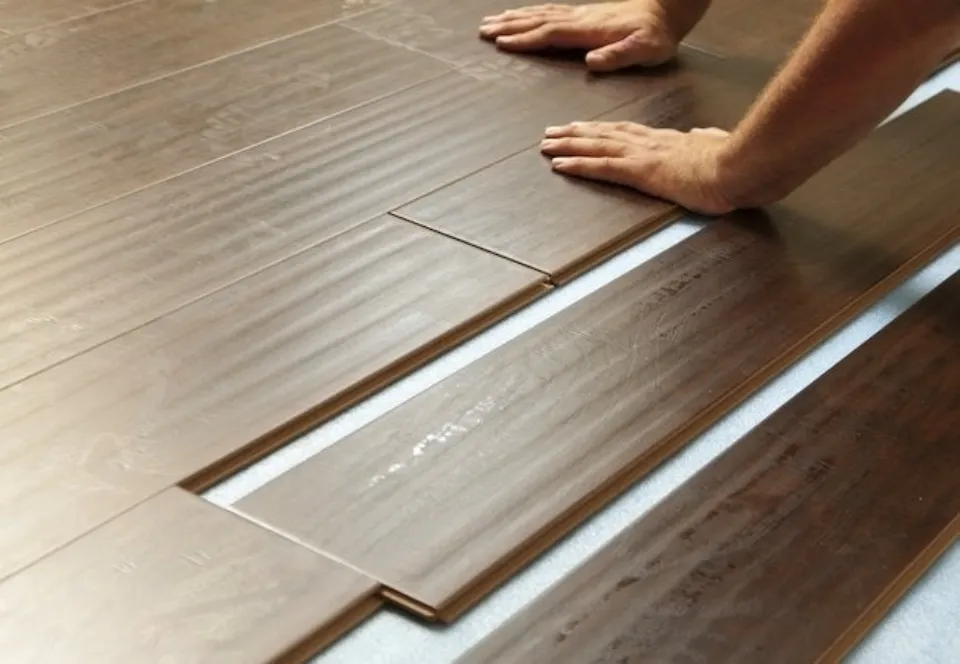
Similar to LVT, the realistic textures and embossing on laminate products have improved over the years, along with the quality of materials and innovation in construction. Not all laminate flooring options are created equal, and those at the lower end of the price spectrum won’t perform as well as those that bear the NALFA (North American Laminate Flooring Association) Certification Seal. In spite of the fact that laminate flooring is a cost-effective option, it is better to spend your money on a high-quality item with proven results than on “the best deal” you can find. If you want the best results, look for laminate products made in the US to get the long-lasting performance your house needs. While exact pricing will depend on factors including the size of your home, where you live, and of course the product selected, installing laminate floors, on average, costs about half as much or less than the cost of installing hardwood floors. However, as was previously mentioned, laminate cannot be refinished and as a result, does not have the same strong resale value as real wood.
Laminate flooring is water-resistant but not entirely waterproof when it comes to handling moisture. Although laminate is undoubtedly better equipped than hardwood to handle liquid spills, liquid that seeps beneath the surface can still result in serious harm like warping and mold growth. It is necessary to replace laminate flooring if it has been harmed by moisture. However, many laminate products have a 10-year warranty, and with proper maintenance, they should last your home 15 to 20 years.
Which is More Expensive: Laminate Or Vinyl Flooring?
So, the big question is: which is more expensive, laminate or vinyl? Truthfully, both products are pretty comparable in cost as both are less expensive options than other flooring materials like hardwood or porcelain tile. However, if you look into luxury vinyl options, vinyl can be more expensive. A good general rule of thumb is as the quality of luxury vinyl products increases, so does the price tag.
Conclusion: Which Floor Should You Buy?
Both laminate flooring and vinyl flooring are great options for people who want a DIY project and are searching for affordable, durable floors. Think about your budget, functional needs, and preferred designs when looking for new floors.
Vinyl can be less expensive than laminate and offers the best resistance to excessive moisture and spills. However, laminate provides a more authentic wood look to improve your home’s design aesthetic.
FAQs
Which is Better Vinyl Flooring Or Laminate Flooring?
While costs are similar, the value of premium vinyl far exceeds that of laminate based on quality and value. Premium vinyl is stronger and more stable than laminate, resistant to moisture and the elements, and simple to install and maintain. Laminate is restricted to light traffic and low moisture applications.
Is Laminate More Waterproof Than Vinyl?
The materials they are made of are the primary distinction between laminate and vinyl flooring. In contrast to laminate, which uses a fiberboard core made of by-products of wood processing, vinyl is entirely synthetic. This means that while vinyl flooring is completely waterproof, laminate flooring is not.
What Lasts Longer Vinyl Or Laminate?
Lifespan: Thick, high-quality vinyl flooring has a lifespan of up to 25 years, compared to a lifespan of less than 10 years for thinner vinyl flooring. Although poorly maintained laminate flooring may only last five to ten years, laminate can last between 15 and 25 years.

